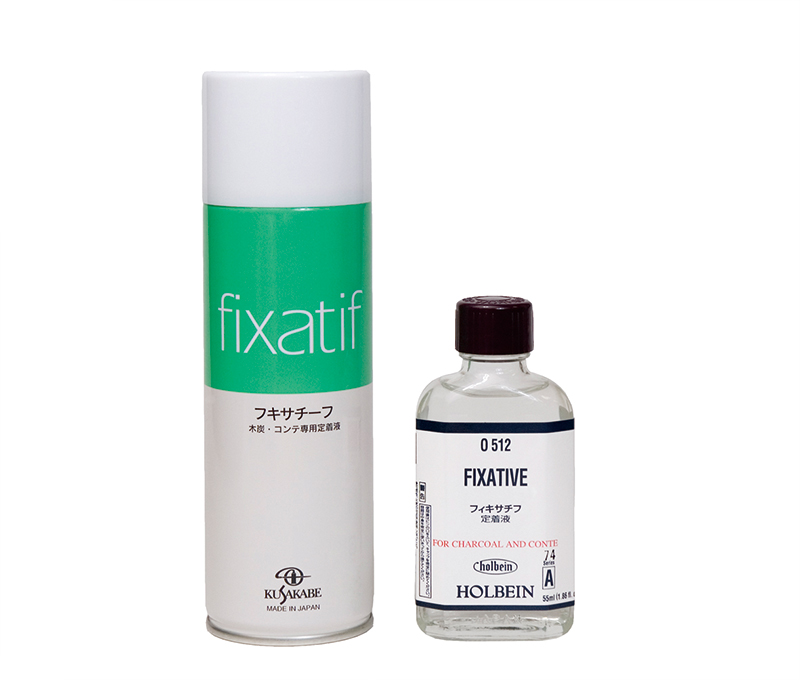Fixatives
フィクサチーフ
Fixatives
CATEGORIES
Fixatives are liquids produced by dissolving synthetic resins in ethyl alcohol (for example) that produce a thin film on the surface of a finished work produced in charcoal, pencil, conté or the like after being applied in mist form using a mister; the resulting coat fixes and protects the colors and the medium. Most commonly commercially available spray cans are used to apply the fixatives because this is the easiest method. There are other fixatives available, such as those which use petroleum-based solvents for pastels.
With materials such as charcoal and conté, which are composed almost entirely of their coloring ingredient (pigment, charcoal, etc.), their ability to fix to the medium (for example, paper) is limited; the surface of works tends to be very powdery and unstable. As a result, it is very easy for such works to be damaged or for color to come off. By applying fixative to such a finished work, the coloring ingredient is fixed to the medium, increasing the work’s durability. (The composition of the coloring ingredients makes it difficult to fix it sufficiently.)
The synthetic resins that are the primary ingredients of fixatives now include polyvinyl butyral resin, acrylic resins, and cellulose derivatives, which replaced the traditional resins such as shellac (made from the secretions of a lac insect), colophonium (pine resin), and dammar.
When using fixatives, it is essential to work in a well ventilated area. Moreover, because fixatives are flammable, one should avoid working near open flames. Fixatives are available for purchase at most art supply and stationery stores.

